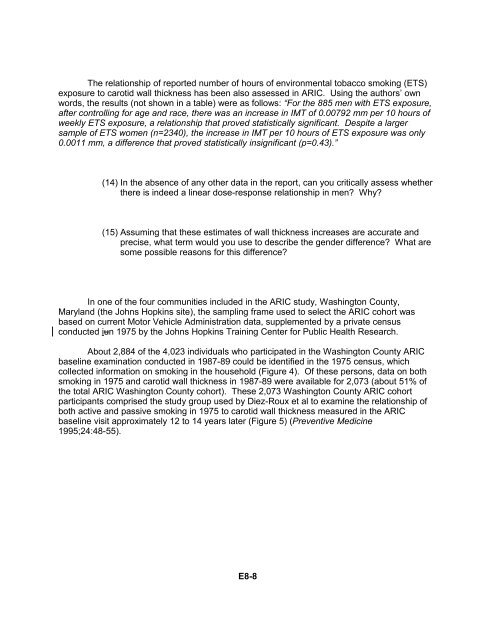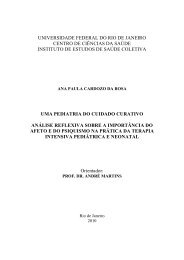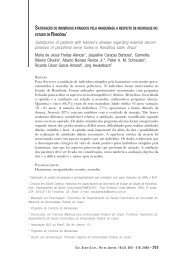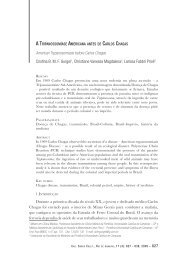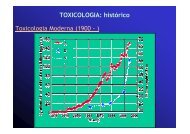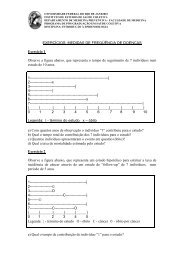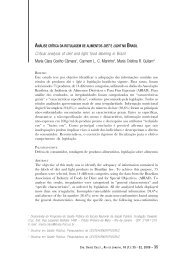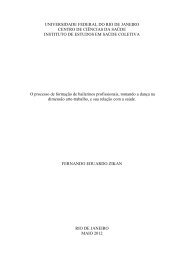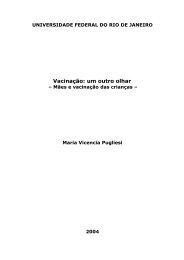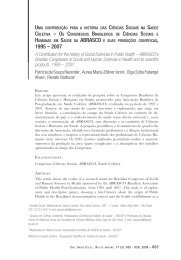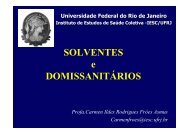Passive smoking and atherosclerosis - IESC/UFRJ
Passive smoking and atherosclerosis - IESC/UFRJ
Passive smoking and atherosclerosis - IESC/UFRJ
You also want an ePaper? Increase the reach of your titles
YUMPU automatically turns print PDFs into web optimized ePapers that Google loves.
The relationship of reported number of hours of environmental tobacco <strong>smoking</strong> (ETS)<br />
exposure to carotid wall thickness has been also assessed in ARIC. Using the authors’ own<br />
words, the results (not shown in a table) were as follows: “For the 885 men with ETS exposure,<br />
after controlling for age <strong>and</strong> race, there was an increase in IMT of 0.00792 mm per 10 hours of<br />
weekly ETS exposure, a relationship that proved statistically significant. Despite a larger<br />
sample of ETS women (n=2340), the increase in IMT per 10 hours of ETS exposure was only<br />
0.0011 mm, a difference that proved statistically insignificant (p=0.43).”<br />
(14) In the absence of any other data in the report, can you critically assess whether<br />
there is indeed a linear dose-response relationship in men? Why?<br />
(15) Assuming that these estimates of wall thickness increases are accurate <strong>and</strong><br />
precise, what term would you use to describe the gender difference? What are<br />
some possible reasons for this difference?<br />
In one of the four communities included in the ARIC study, Washington County,<br />
Maryl<strong>and</strong> (the Johns Hopkins site), the sampling frame used to select the ARIC cohort was<br />
based on current Motor Vehicle Administration data, supplemented by a private census<br />
conducted iun 1975 by the Johns Hopkins Training Center for Public Health Research.<br />
About 2,884 of the 4,023 individuals who participated in the Washington County ARIC<br />
baseline examination conducted in 1987-89 could be identified in the 1975 census, which<br />
collected information on <strong>smoking</strong> in the household (Figure 4). Of these persons, data on both<br />
<strong>smoking</strong> in 1975 <strong>and</strong> carotid wall thickness in 1987-89 were available for 2,073 (about 51% of<br />
the total ARIC Washington County cohort). These 2,073 Washington County ARIC cohort<br />
participants comprised the study group used by Diez-Roux et al to examine the relationship of<br />
both active <strong>and</strong> passive <strong>smoking</strong> in 1975 to carotid wall thickness measured in the ARIC<br />
baseline visit approximately 12 to 14 years later (Figure 5) (Preventive Medicine<br />
1995;24:48-55).<br />
E8-8


